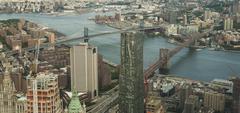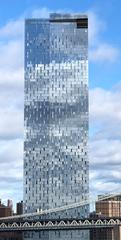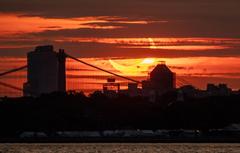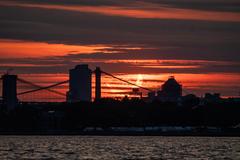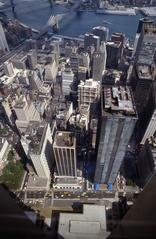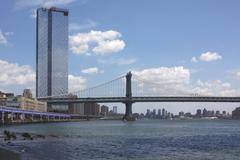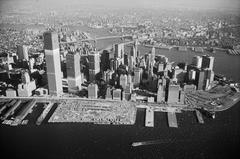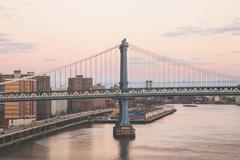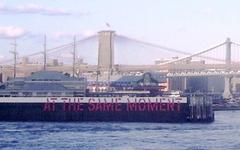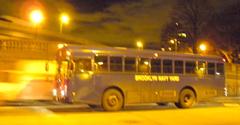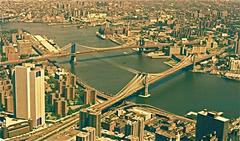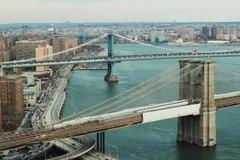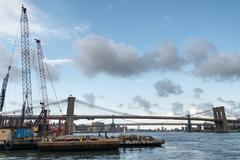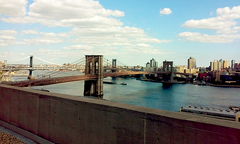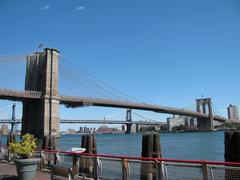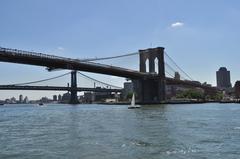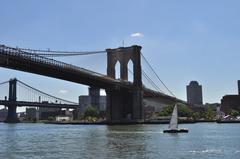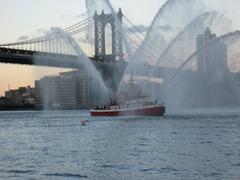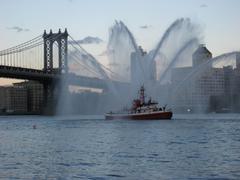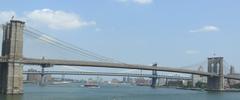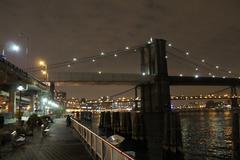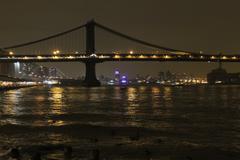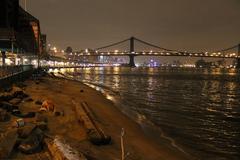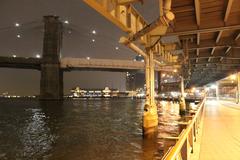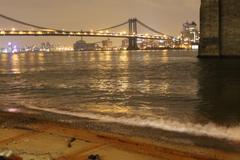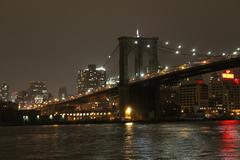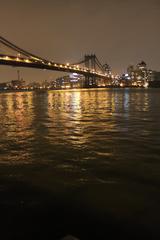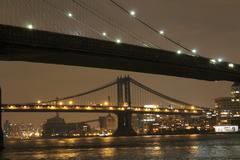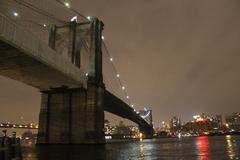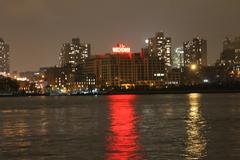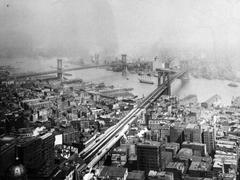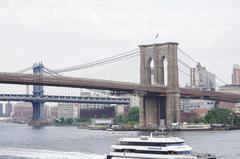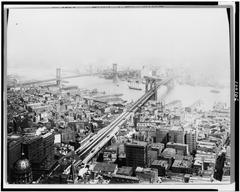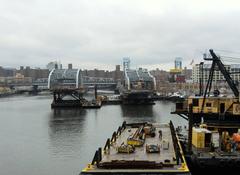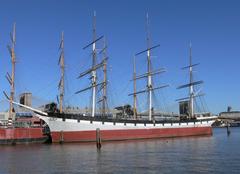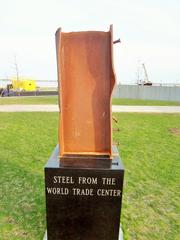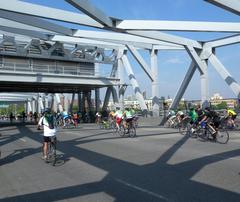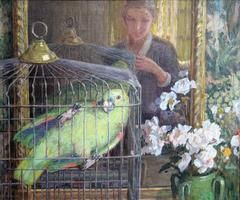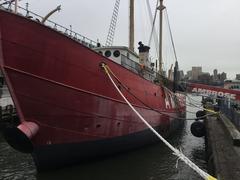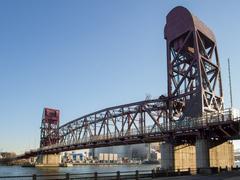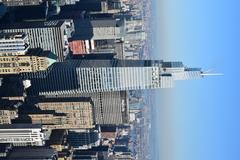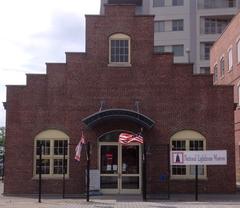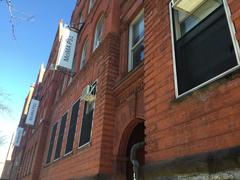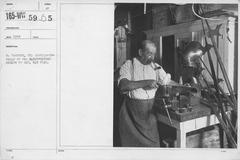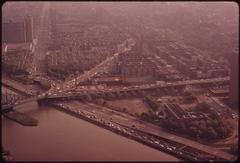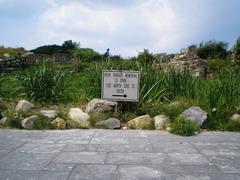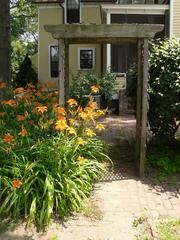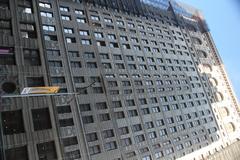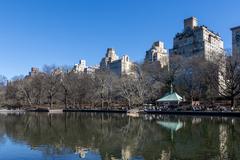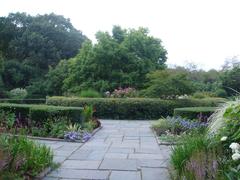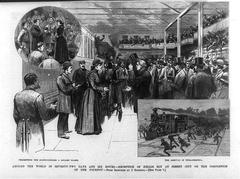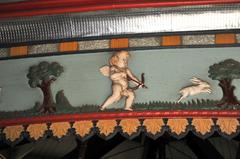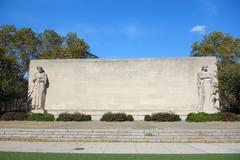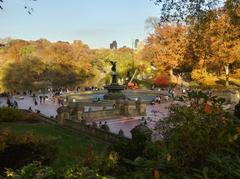
Comprehensive Guide to Visiting the Manhattan Bridge
Publication Date: 18/07/2024
Introduction to the Manhattan Bridge
The Manhattan Bridge is an iconic symbol of New York City’s architectural and engineering prowess, seamlessly connecting the boroughs of Manhattan and Brooklyn. Completed in 1909, this suspension bridge has become an integral part of the city’s infrastructure, facilitating the movement of people and goods across the East River. The bridge’s design, attributed to the renowned engineer Leon Moisseiff, incorporates innovative techniques that have influenced the construction of subsequent suspension bridges, including the Golden Gate Bridge (ASCE). Its historical significance is underscored by the economic and developmental impacts it has had on New York City, making it not just a transportation artery but a cultural landmark as well (NYTransitMuseum). This guide delves into the rich history, architectural marvels, and practical visitor information for those looking to explore the Manhattan Bridge.
Overview of Topics Covered
- Introduction
- History of the Manhattan Bridge
- Early Plans and Construction
- Opening and Impact
- Architectural and Engineering Significance
- Visitor Information
- Ticket Prices and Opening Hours
- Best Times to Visit
- Travel Tips
- How to Get There
- Nearby Attractions
- Special Events and Guided Tours
- Photographic Spots
- Conclusion
- FAQ
Exploring the Manhattan Bridge - History, Significance, and Visitor Information
History of the Manhattan Bridge
Early Plans and Construction
The idea for the Manhattan Bridge emerged in the late 19th century as the Brooklyn Bridge, completed in 1883, struggled to accommodate the burgeoning traffic between the two boroughs. The increasing population and industrial activity demanded a new crossing, leading to the formation of the Bridge Department in 1898 to oversee the project (History.com).
The design competition for the Manhattan Bridge was fierce, with renowned bridge engineer Leon Moisseiff ultimately securing the contract in 1904. Moisseiff’s design, a suspension bridge with a unique truss system, promised a lighter and more cost-effective structure compared to its predecessors (NYC.gov).
Construction commenced in 1901 and faced numerous setbacks, including financial constraints, labor disputes, and a tragic accident in 1908 when a section of the bridge collapsed, killing two workers (NYTimes).
Opening and Impact
Despite the challenges, the Manhattan Bridge was completed and opened to the public on December 31, 1909. The bridge, with its distinctive four-cable suspension system and graceful archways, was hailed as a marvel of modern engineering (NYTransitMuseum).
The Manhattan Bridge’s impact on New York City was immediate and profound. It significantly alleviated congestion on the Brooklyn Bridge, facilitating the flow of people and goods between the two boroughs. This improved connectivity spurred economic growth and development in both Manhattan and Brooklyn, further solidifying New York City’s position as a global metropolis (Brownstoner).
Architectural and Engineering Significance
The Manhattan Bridge is not only a vital transportation artery but also a significant architectural and engineering landmark. Its design, a departure from the traditional truss-stiffened suspension bridges of the time, showcased the innovative use of materials and construction techniques.
Moisseiff’s design incorporated a lighter, more flexible truss system, reducing the bridge’s weight and cost. This innovative approach, known as the “deflection theory,” allowed for longer spans and influenced the design of numerous suspension bridges that followed, including the iconic Golden Gate Bridge (ASCE).
The bridge’s aesthetic appeal is equally noteworthy. Its graceful curves, towering steel towers, and intricate web of cables create a striking visual impact, particularly when illuminated at night. The four massive anchorages, embedded deep within the bedrock on both sides of the East River, are a testament to the bridge’s immense strength and stability (NPS).
Visitor Information
Ticket Prices and Opening Hours
Visiting the Manhattan Bridge is free of charge, making it an accessible landmark for all. The pedestrian and bike paths are open 24 hours a day, allowing visitors to experience the bridge at any time.
Best Times to Visit
The best times to visit the Manhattan Bridge are early mornings or late afternoons to avoid peak traffic and enjoy the serene views of the city skyline. Sunset and nighttime visits offer breathtaking views of the illuminated bridge and New York City lights.
Travel Tips
How to Get There
The Manhattan Bridge is easily accessible by various modes of transportation. Subway lines B, D, N, Q, and R run across the bridge, and several bus routes serve the area. For those driving, there are parking options available in both Manhattan and Brooklyn.
Nearby Attractions
There are numerous attractions near the Manhattan Bridge, including the Brooklyn Bridge Park, DUMBO (Down Under the Manhattan Bridge Overpass), the New York Transit Museum, and the South Street Seaport in Manhattan. These nearby sites offer additional activities and sights to enhance your visit.
Special Events and Guided Tours
Throughout the year, the Manhattan Bridge area hosts various events such as art installations, cultural festivals, and public performances. Check local listings for current events during your visit.
Several companies offer guided tours of the Manhattan Bridge, providing historical insights and unique perspectives on the bridge’s construction and significance. These tours can be a great way to deepen your understanding and appreciation of this landmark.
Photographic Spots
The Manhattan Bridge offers numerous spots for photography enthusiasts. Popular locations include the pedestrian path, the Brooklyn waterfront, and the Manhattan side near Chinatown. Each offers unique angles and stunning backdrops of the bridge and the city skyline.
Conclusion
The Manhattan Bridge remains a vital transportation link, carrying millions of commuters, vehicles, and subway trains between Manhattan and Brooklyn each year. Beyond its functional role, the Manhattan Bridge has become a beloved symbol of New York City, appearing in countless films, photographs, and works of art. Its enduring presence serves as a reminder of the city’s rich history, architectural ingenuity, and unwavering spirit. Whether you’re a history buff, architecture enthusiast, or simply a traveler, exploring the Manhattan Bridge is a rewarding experience that captures the essence of New York City.
FAQ
What are the Manhattan Bridge visiting hours?
The pedestrian and bike paths on the Manhattan Bridge are open 24 hours a day.
How much does it cost to visit the Manhattan Bridge?
Visiting the Manhattan Bridge is free of charge.
Where can I find the best views of the Manhattan Bridge?
The best views can be found from the pedestrian path on the bridge, the Brooklyn waterfront, and the Manhattan side near Chinatown.
Summary and Key Takeaways
The Manhattan Bridge stands as a testament to New York City’s rich history and architectural innovation. Since its opening in 1909, it has played a crucial role in connecting Manhattan and Brooklyn, driving economic growth and urban development (Brownstoner). Beyond its functional importance, the bridge’s aesthetic appeal and engineering feats have made it a beloved symbol of the city, appearing in numerous films, photographs, and works of art. Whether you are a history enthusiast, architecture buff, or simply a traveler, the Manhattan Bridge offers a unique and rewarding experience that captures the essence of New York City (NPS). Don’t miss the opportunity to visit this remarkable landmark and explore its surrounding attractions, ensuring a memorable and enriching visit.
Sources and Further Reading
- History, significance, and visitor information for the Manhattan Bridge, 2021, History.com (History.com)
- NYC Department of Transportation, 2021, NYC.gov (NYC.gov)
- The New York Times, 2009, NYTimes.com (NYTimes)
- NY Transit Museum, 2021, nytransitmuseum.org (NYTransitMuseum)
- Brownstoner, 2021, brownstoner.com (Brownstoner)
- American Society of Civil Engineers, 2021, ASCE.org (ASCE)
- National Park Service, 2021, nps.gov (NPS)

